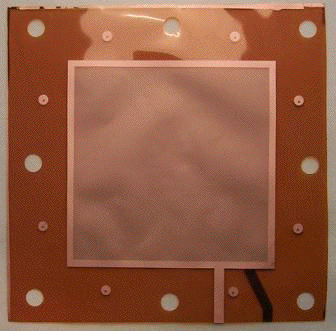
GEM
FOILS FRAMING
(Small and medium size GEM foils)
GEMs should be handled
in a clean room with gloves; a facial mask is recommended. They can be glued
on supporting fiberglass frames; contact with dirty or hard surfaces should
be avoided (found to generate shorts). The simplest assembly procedure for small
size GEMs (up to 10x10 cm2) is to tension-tape the GEMs on a temporary
frame and overlay on the (smaller) final frame previously coated with epoxy.
If using thin frames, pasting one frame on each side of the GEM eliminates warping.
For larger sizes, the temporary holding frame has to be larger than the final,
and weight-loaded to keep the foil under tension during curing. A better procedure
is to temporarily paste the GEM outer edges on a sturdy metal or plastic frame
and glue on the final frame at controlled high temperature (40 to 50 degrees).
This guarantees good mechanical tension of the GEM at room temperature.
Special care should be taken to prevent epoxies to diffuse into the GEM holes;
it has been found that (even using certified insulating glues) this can substantially
increase the leakage current, possibly because of insufficient polymerization
or moisture inclusion in the holes.
The following is the framing sequence used at CERN for small-size GEM foils.
A raw GEM foil, about 15x15 cm2 area with 10x10 cm2 active:

Schematics of a thin fiberglas mounting frame. To avoid warping, two thin (0,5 mm thick) frames are glued at the same time on top and bottom of the foil. The frames have holes on the corners for assembly into the final detector:

Two thick Plexiglas frames with an inner size exceeding the GEM active area are used as stretching tool:
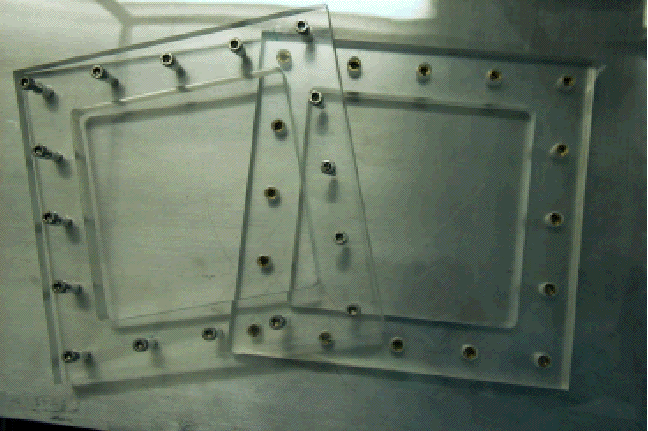
The GEM foil is gently stretched over one frame (using sticky tape at edges if necessary); the two frames are bolted together firmly maintaining the foil:
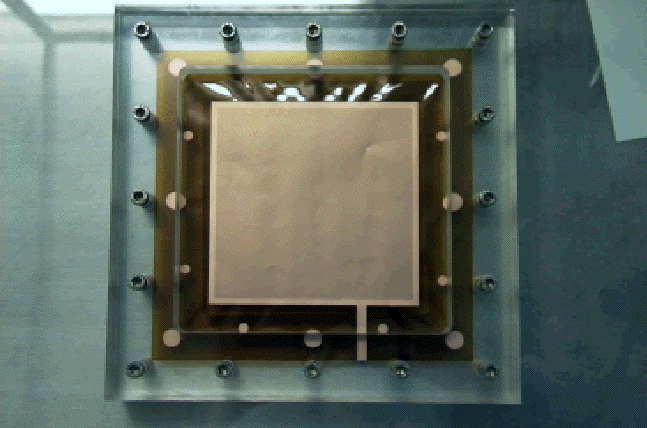
The stack is placed in an oven and gently heated to 40 °C; thermal expansion of the frame uniformly stretches the foil:
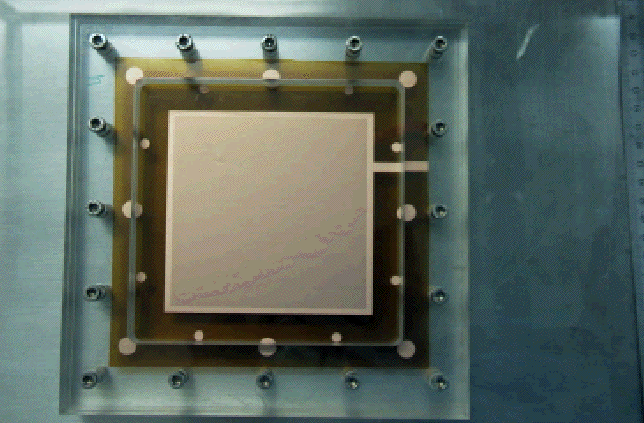
Epoxy is spread over the sides of one (thick) or two (thin) fiberglas frames, carefully placed on top (or top and bottom) of the GEM foil stretched by the hot Plexiglas holding frame. The stack is placed again in the oven for the time needed to cure the epoxy:

A framed GEM. After removing from the stretching support and cutting of the excess kapton foil. With 0.5 mm thick frames on each side, GEMs can be assembled in cascade in a detector at a distance of 1 mm or more, making use of insulating pillars at the four corners:
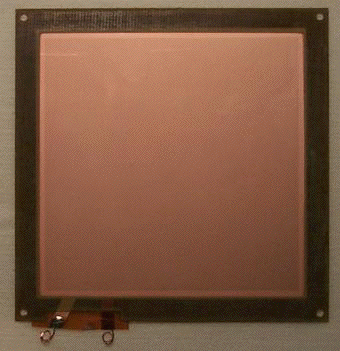
Before assembly in the final detector, GEMs electrodes should be gently blown
with nitrogen in a clean room. The assembled detector should be left for several
hours on open gas flow (one day recommended) before powering; the voltage on
GEM should then be raised gradually, with continuous monitoring of the leakage
current that should never exceed few tens of nA. Use of high value protection
resistors (10 to 100 M) is recommended. Most GEMs hold the maximum operating
voltage (typically 500 V in Argon-CO2 70-30) after several hours from start
when powered with the slow procedure described above See also GEM ASSEMBLY.
SHORTS BURNING:
In few cases high current developed after assembly. Some defective GEMs have then been recovered by "burning" shorts with high current in the following way: the protection resistor is shorted, and the GEM is connected to a HV power supply current-limited to several hundreds µA. The voltage is increased in steps until the short disappears. This should be considered as an emergency procedure if disassembly and cleaning are not possible.